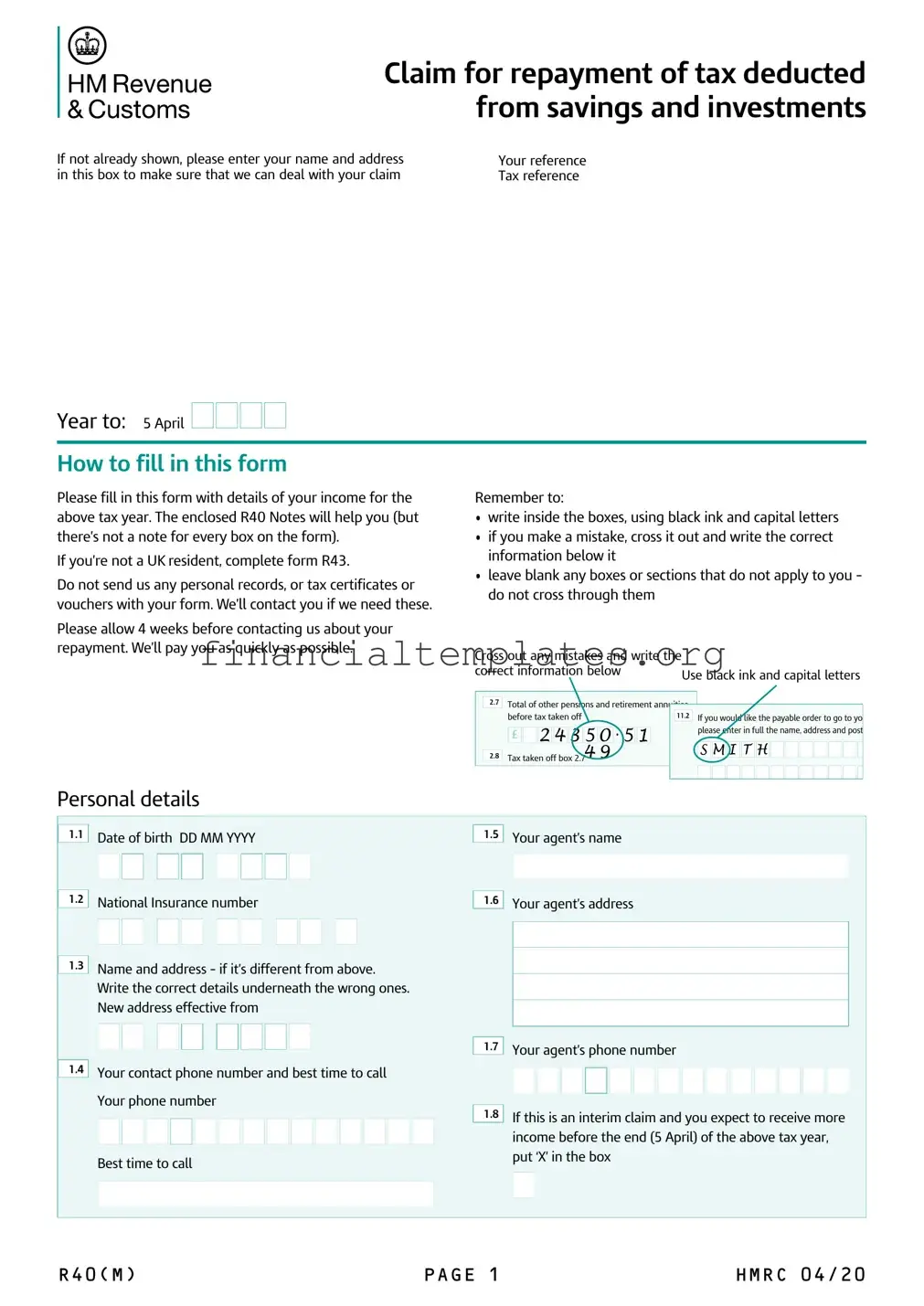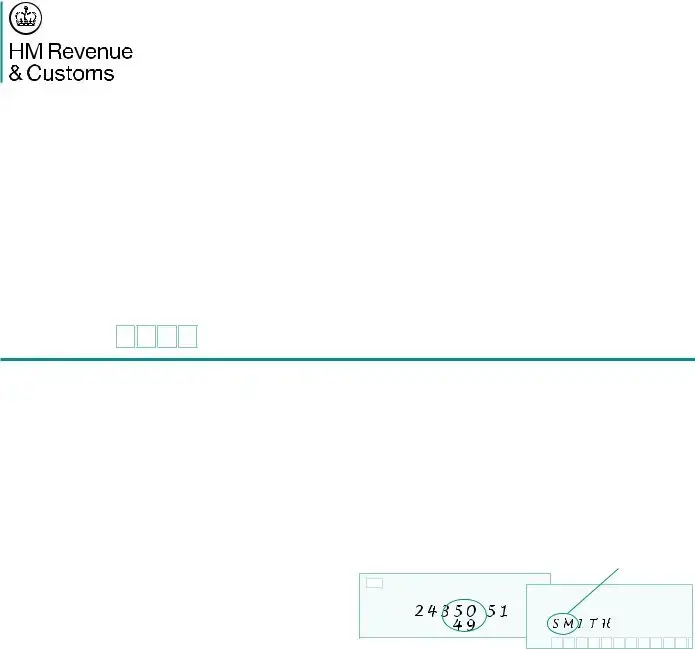The United States equivalent to the UK R40 form is the IRS Form 1040, "U.S. Individual Income Tax Return." Both forms are used by individuals to report their income for the tax year. They help in determining the amount of tax to be paid or refunded. Just like the R40 form, Form 1040 requires detailed information about different sources of income, including employment, pensions, and investments. Taxpayers can also claim deductions and credits that could lower their taxable income, mirroring the R40's function of ensuring taxpayers are refunded any overpaid tax.
Form 1099-INT, "Interest Income," in the U.S. closely aligns with sections of the R40 form related to income from savings and investments. This document is issued by banks or financial institutions to report the interest a taxpayer has earned during the tax year. Similar to the R40, it accounts for tax deducted at the source on savings. While the R40 is a claim form for relief or refund, the information on a 1099-INT directly feeds into the computation of taxable income and tax liabilities on Form 1040.
The IRS Form 1099-DIV, "Dividends and Distributions," is akin to the R40's sections on dividends from investments. This form reports dividends and distributions received during the tax year, a vital part of understanding an individual's investment income, paralleling the UK's system. Both forms ensure that investment income is correctly reported and any applicable tax adjustments or refunds are made for overpayment, adhering to each country's tax laws and regulations.
IRS Form 5498, "IRA Contribution Information," resembles part of the R40 form concerning pensions and annuities. Both documents are crucial for retirement planning and tax calculations. Form 5498 details contributions to retirement accounts, serving a similar purpose as the R40 by providing essential information for accurately computing tax relief on retirement savings, thereby optimizing the taxpayer's financial situation in accordance with relevant tax rules.
The Schedule E (Form 1040), "Supplemental Income and Loss," is used in the U.S. for reporting income or loss from rental real estate, royalties, partnerships, S corporations, estates, trusts, and residual interests in REMICs. It's similar to those sections of the R40 that deal with income from trusts, estates, and property. Both documents ensure taxpayers declare income from these sources properly, allowing for accurate tax calculation and any necessary adjustments for overpaid taxes.
IRS Form 4868, "Application for Automatic Extension of Time To File U.S. Individual Income Tax Return," although not a direct equivalent in function, shares a procedural similarity with the flexibility provided in the R40's submission timelines. It reflects the understanding in both the U.K. and U.S. tax systems that circumstances may necessitate additional time to accurately complete and submit tax documents, ensuring taxpayers can fulfill their obligations without penalty for delays.
Lastly, the IRS Form 8857, "Request for Innocent Spouse Relief," offers an interesting parallel to the nuanced approach of tax liability cases seen in the R40 form's intention. While the R40 helps claim back overpaid taxes, the Form 8857 is designed to protect taxpayers from undue liability due to actions taken by their spouse or former spouse. Both forms acknowledge individual circumstances in the tax system, aiming to ensure fair treatment of taxpayers.
















 •
• 















 •
• 















 •
• 















 •
• 















 •
• 















 •
• 















 •
• 















 •
• 















 •
• 















 •
• 















 •
• 



